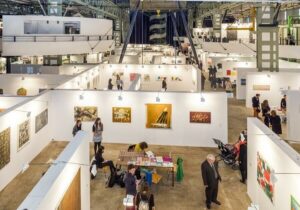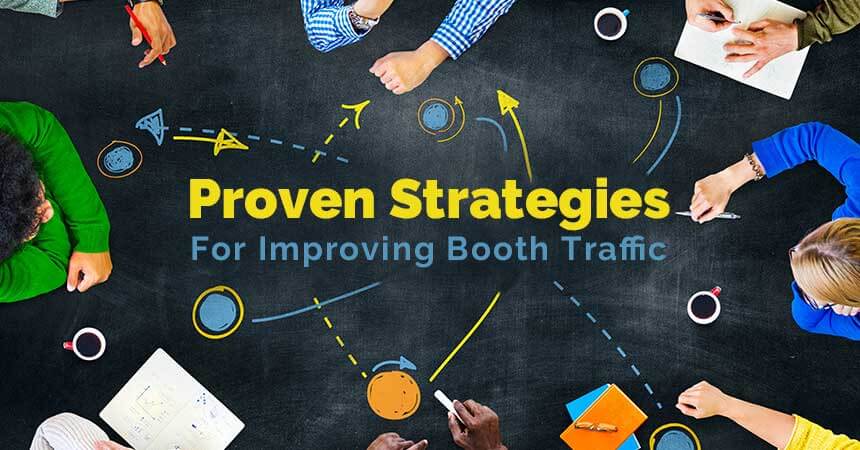
Proven Strategies For Improving Booth Traffic
There is little doubt that business owners benefit from leads generated at trade shows and conventions. However, it’s not easy to stand out from competitors at those shows. That’s why it’s become increasingly important to take time ahead of any convention or trade show to plan for success.
Show organizers and display experts alike encourage exhibitors to research a show’s audience ahead of time to ensure the exhibit is tailored to the attendees. For maximum effectiveness, business owners must take specific steps to develop strategies that will prove to be the most effective for improving booth traffic.
Contact Attendees Before The Show
Conventional wisdom dictates that anticipated attendees be contacted well before the show to let them know what they can expect from your booth. However, it’s also important to keep any messages to a minimum. Too many contacts will be regarded as spam rather than beneficial information.
Use Facebook, Twitter, And Other Relevant Social Media Sites To Generate Enthusiasm:
Since the use of social media has become the norm, attendees will generally see posts on those sites. Well-designed messages will, as a rule, be seen and welcome.
 E-Mail Is Still Useful:
E-Mail Is Still Useful:
Even though the overall importance of e-mail has suffered in recent years due to the use of abusive marketing tactics, it’s still a proven way to reach potential attendees. Again, the caveat is to craft a message that’s informative and concise.
Consider A Pre-Show Survey:
This strategy must be used carefully to generate positive results. People balk when asked to complete lengthy surveys, so keep any survey short. Rather than using too many closed-end questions, include open-ended questions allowing responses that indicate what the attendee expects to experience at the show.
Direct Mailings Provide An Extra Way To Reach Possible Booth Visitors:
When registration information is made available, mailing quality, well-designed information can yield impressive results.
Of course, there are other ways to contact potential attendees, but these strategies are proven to generate interest and boost visitor awareness of your brand. Don’t be afraid to employ multiple contact strategies, as not all potential attendees will respond positively to every contact method.
Booth Designs And Locations Impact Success
In many cases, exhibitors purchase one booth and use it over and over with few, if any, changes. Generally, that practice will not deliver the best results. Take the time to customize the display to meet visitors’ expectations at specific shows.
Geography Matters:
A booth design that’s effective in Boston may not prove to be as successful in Las Vegas. When finalizing a booth’s design for a specific audience, carefully consider the demographic characteristics of the attendees. Even the season can impact the display design, as seasonal themes can be effective ways to generate interest.
Choose Color Schemes Carefully:
Design experts have been using colors to influence the way booth visitors feel. Some color choices are more likely to draw visitors to a booth and keep them there longer. While you may not want a visitor to fall asleep at your booth, it’s generally better to make a visitor feel welcome and relaxed.
Pay Attention To Lighting:
While harsh lighting isn’t really comforting for visitors, neither is darkness. Most venues have overhead lighting that generates plenty (and sometimes too much) light, but there may well be specific locations that are shrouded in shadows. Plan for any eventuality and don’t be afraid to inquire about lighting conditions in a venue.
Booth Sizes Impact Effectiveness:
While a convention visitor may have an interest in your product or service, they may not feel comfortable jostling for a spot in an overly crowded exhibit.
Keep The Flow Moving:
Just about everyone who has attended any type of trade show or convention has found themselves trapped in an exhibit space that wasn’t designed to provide traffic flow. Industry experts encourage exhibitors to carefully plan the display to make sure booth traffic isn’t impeded by tables or other fixtures.
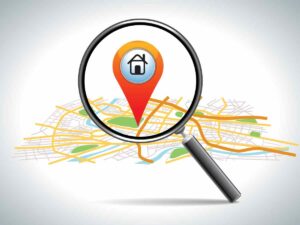 Location:
Location:
Yes, some display spots are more likely to generate results than others. That’s why prime spaces cost more than others. While it may be tempting to minimize costs by choosing a less-expensive space, that idea may prove to be unwise.
There is a science to choosing the best exhibit space. When choosing a space, it’s important to pick a spot that will expose the display to the maximum number of visitors.
Since improving booth traffic is so important, consider discussing your needs and expectations with an expert if you’re unsure how to proceed. Industry experts are generally able to provide quality advice to exhibitors exploring possible strategies to enhance their return in investment.
Are Incentives Worth The Investment?
That’s not always a question that’s easy to answer, as circumstances vary. In the vast majority of instances, proving some type of incentive to booth visitors is worth the expense, but there are some types of incentives that produce better results than others.
Typical promotional items may not be worth the effort or expense. Many of the less-expensive promotional giveaways don’t provide any real value for the exhibitor or booth visitors.
Promotional items must be carefully selected to achieve the best results. Again, it’s important to focus on the demographic groups that will be most likely to attend, as they will react differently to various promotional items.
Consider what types of incentives attendees will actually value. For example, some professionals will respond much more favorably to the offer of a high-quality white paper than a cheap pen and pencil set or keychain.
However, it doesn’t hurt to offer select prospects more valuable incentives that provide a genuine and very tangible benefit. A messenger bag that includes your company logo may generate goodwill and constantly remind the booth visitor of your company. Again, any promotional incentives must be carefully chosen to match the type of event and expected visitors.
Avoid Hackneyed Strategies
While it’s important to coax attendees to visit a display, over-zealous or trite strategies tend to achieve the opposite result. No one likes to feel manipulated, and abrasive tactics tend to put visitors in the wrong frame of mind even if they step up to the booth.
The most trade show or convention visitors are overwhelmed by the number of displays, so industry experts now agree it makes more sense to focus on providing a welcoming environment that provides relief from aggressive hawkers.
Pick Your Ambassadors Carefully
Remember that exhibit staff members are your company brand ambassadors. That means they should be selected carefully. Many companies assign employees to work at various shows without regard to the employees’ ability to take advantage of the opportunities proven to boost the company’s bottom line.
It takes a special talent to be a true brand ambassador at a convention or trade show. In some cases, it makes sense to train existing employees to effectively function in a trade show setting. In other cases, it might make more sense to hire event-specific experts.
Since being in trade shows and conventions requires a significant investment, it certainly is important to make sure the individuals representing the company are the best choices available.
Define Your Company Display’s Look
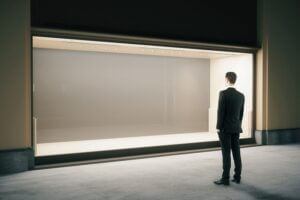 During any type of show, it’s easy to see a booth’s look suffer. Far too often a booth will become cluttered with display materials or other items.
During any type of show, it’s easy to see a booth’s look suffer. Far too often a booth will become cluttered with display materials or other items.
The exhibit personnel must take time to eliminate any clutter quickly to avoid visitors simply passing the booth due to a messy look.
If it becomes obvious some element of the display isn’t working or becomes damaged, it generally makes sense to deal with the issue quickly rather than compromising the booth’s effectiveness.
Choosing Interactive Options
One of the best ways to garner the interest of attendees is to provide some type of interactive feature booth visitors can enjoy.
Whether it’s an electronic option or a true hands-on activity will depend on the type of product or service, but today’s attendees are always looking for displays that offer unique experiences.
Provide A Place To Rest
While booth space is valuable, it pays to provide exhibit visitors with a place to rest. In most venues, there are few places for visitors to sit down without leaving the main show floor. Have resources or personnel available to provide information or answer questions while visitors relax, but don’t be too aggressive.
Keep Presentations Short
If your exhibit includes presentations of any type, keep them relatively short. Attendees have a lot to do, so get to the point. Of course, have people available to answer questions and provide additional information after the initial presentation concludes.
Take Time To Develop Relationships
When working with potential clients, take a little time to develop a relationship. That doesn’t mean the attendee has to become your new best friend, but personal attention goes a long way toward developing a firm business connection. This is also the time to ask for an appointment after the show is over.
The Work Doesn’t End When The Convention Ends
One of the most significant problems business owners face is employees not properly following up quality leads after a trade show or convention.
The key word here is qualified, as not everyone who visits a booth is a real prospect. That’s why it’s important to do away with antiquated practices like randomly collecting business cards from everyone visiting a display.
Sending a thank-you note to a prospective client is always a good idea, but take time to personalize the note whenever possible. Communicating with potential clients also provides another way to ask for an appointment. Again, avoid being overly aggressive.
Yes, It’s Important To Stay Within A Budget
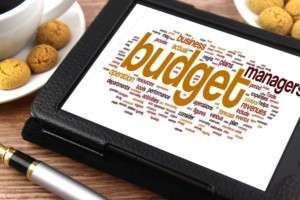 Every organization, regardless of its size, should establish and stick to a budget for any trade show or convention. Costs add up quickly, and there are always unanticipated expenses that crop up.
Every organization, regardless of its size, should establish and stick to a budget for any trade show or convention. Costs add up quickly, and there are always unanticipated expenses that crop up.
Once a business has participated in several shows, the organization will likely be able to estimate what costs a specific event will generate.
What that means is, if you’re new to the trade show circuit, it’s important to be conservative until you acquire a feel for the normal expenses incurred when participating in events.
Remember that even the cost of parking can be significant at some venues, and hotels generally raise their rates when special events are taking place.
Consider padding the budget for a show to make sure sufficient funds are available to deal with unanticipated expenses during an event. For example, a computer or audio/visual device could fail and necessitate an immediate replacement. Make sure contingency funds are always available.
Plan Well Ahead of Any Event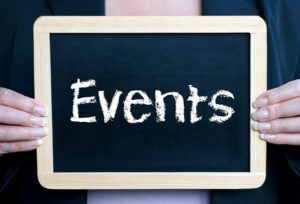
The key to having a successful exhibit is advance planning. That means, in many cases, starting to plan your company’s display months before an event. In many cases, advance planning also reduces the total cost of an event.
It’s also easier to secure a better spot for your display if reservations are made as soon as the event sponsors open registration.
Planning early also makes it easier to work with a design team for the actual display. It’s always better to start early rather than waiting until the last minute.
Of course, starting the planning process early also provides the time to train the personnel who be your brand representatives for the event. Since those individuals will make or break an event, it always pays to make sure the exhibit staff is chosen and trained as early as possible.
Don’t Be Afraid to Ask for Advice
Rather than guessing which display strategies will prove the best results, ask industry experts for additional strategies to improve booth traffic.
The modest cost involved will generally prove to be financially rewarding. If you expect to attend trade shows or conventions in the coming months, now is the time to prepare for those events.
